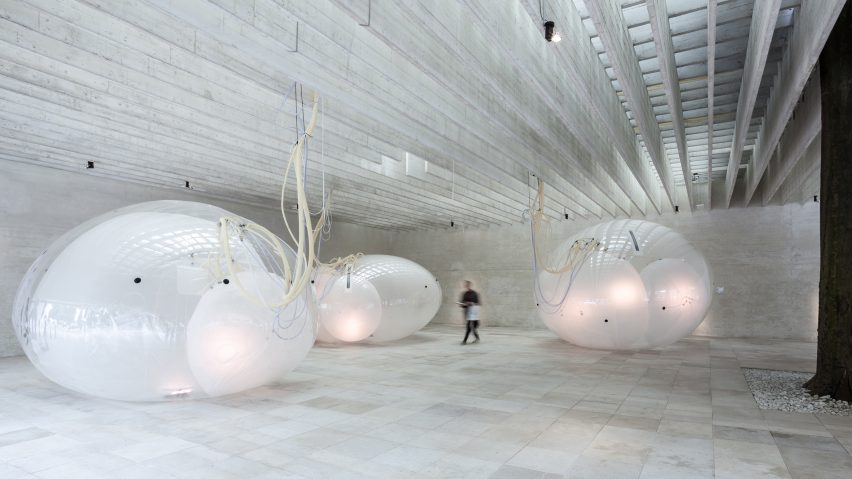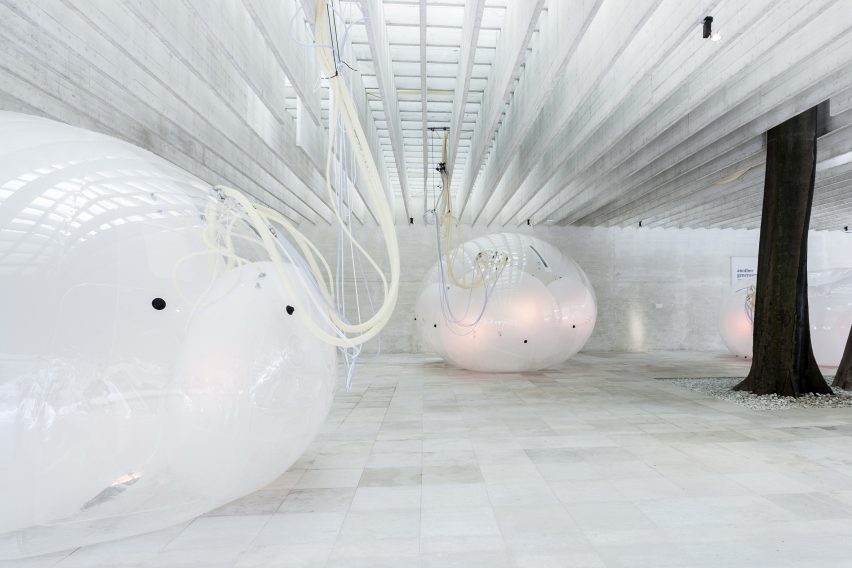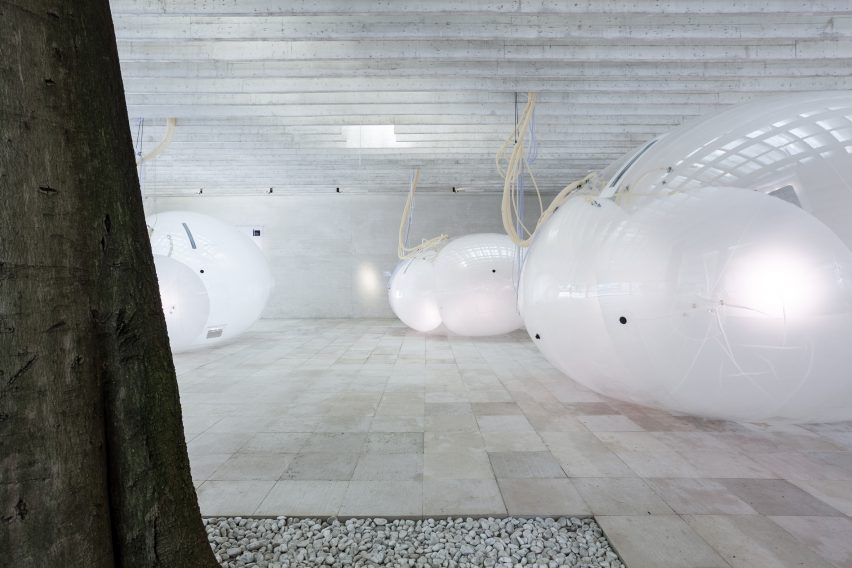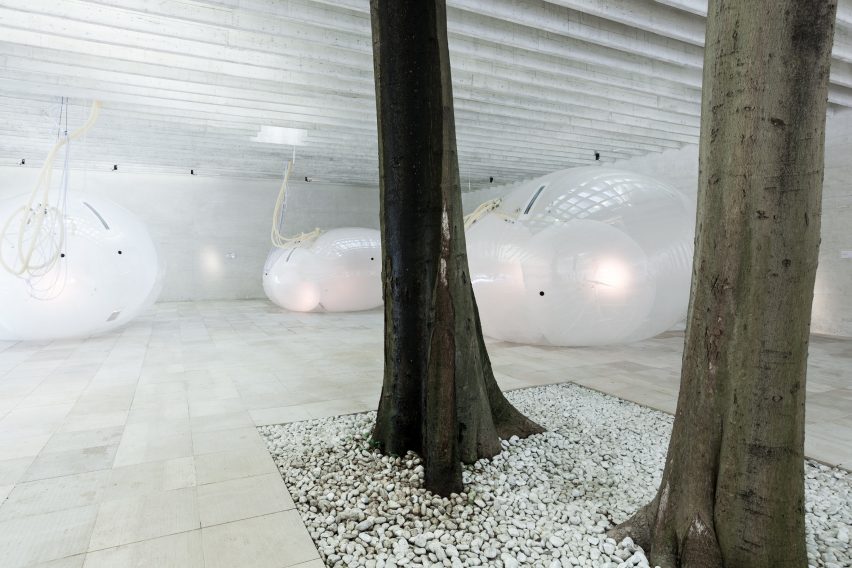
Huge balloons inflate and deflate based on atmospheric conditions inside Nordic Pavilion
The Nordic Pavilion at the Venice Architecture Biennale has been filled with huge inflatable blobs that slowly expand and contract in response to changing environmental conditions.
The exhibition, called Another Generosity, aims to explore the relationship between nature and the built environment. Curators Eero Lundén and Juulia Kauste wanted to show how humans can start to create architecture that is symbiotic with the environment.

They have installed four huge inflatables – designed to look like cells – inside the pavilion, with sensors that monitor the surrounding carbon-dioxide levels, humidity and temperature.
The cells "breathe" in response to these environmental conditions. They either fill or empty themselves of air, depending on the carbon-dioxide levels, and change colour to indicate temperature differences.
"Essentially what we're doing here is we have structures that live according to the changes in their environment, like me and you do," Lundén told Dezeen. "So they breathe."
"They breathe differently in different conditions," he explained. "And then the colours change according to the temperature. They have a little bit of their own life. The original idea was that we wanted to make something that is close to an animal."
"It's this idea about reestablishing a relationship with architecture, because quite often we see buildings and that's it."
The cells could also be filled partially with water, but this will only happen if organisers are able to mitigate the risk of the historic building, constructed by Sverre Fehn in 1962.

The exhibition title, Another Generosity, is taken from the manifesto Yvonne Farrell and Shelley McNamara compiled as curators of the biennale. In it, they explain that their chosen theme of Freespace calls for a "generosity in spirit" in the approach to architecture.
"We started to think that maybe the idea is maybe a much deeper question of how we see ourselves in relation to nature – sort of as an opposition to this anthropocenic world view to try to think of what architecture could be in a more symbiotic relationship with its environment," said Lundén.
"I think gradually from the 60s and 70s we have started to reestablish our position towards nature – we're not using all the resources that we can, and eating everything," he said. "Architecture is a consequence of our world view. We need to be something different."

Also at this year's biennale, architecture firm Caruso St John and artist Marcus Taylor have installed a huge "island" over the roof of the British pavilion, and at the Swiss pavilion, a group of Zurich-based architects have created a warren of unusually scaled rooms to draw attention to the ubiquitous interior design of rental properties.
The Venice Architecture Biennale 2018 opens to the public tomorrow and continues until 25 November 2018.
Photography is by Andrea Ferro.